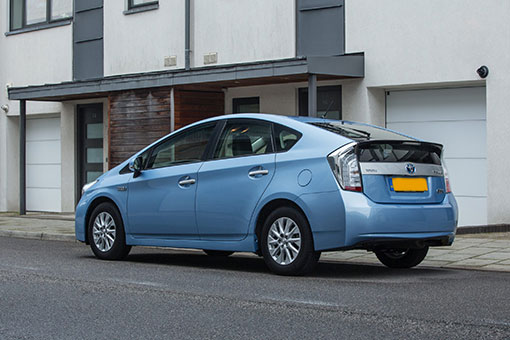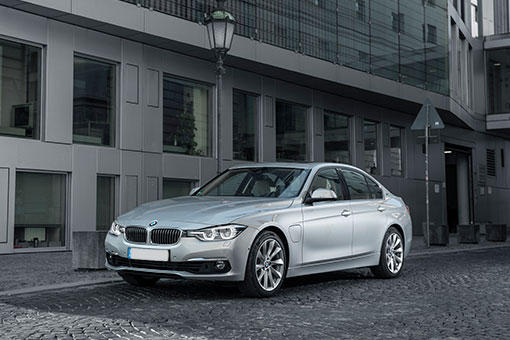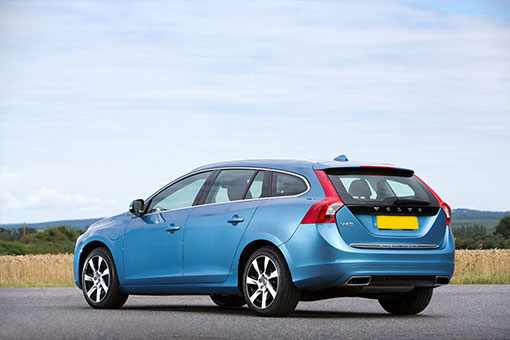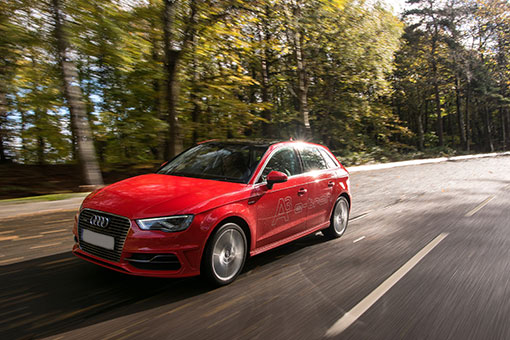How to be more environmentally friendly on the roads

The changing climate of our world is something that nearly everyone is aware of. From being more proactive in terms of recycling and improving the efficiency of our homes to changing our diet and even just switching off the lights when they’re not in use, there are plenty of ways that we can help reduce our carbon footprint and our effect on the planet.
There’s a lot you can do to help when it comes to motoring, too. Some small changes can have a drastic effect on your efficiency and, when combined, will help to make your travel ‘greener’ overall. Let’s take a look at what you could be doing to help.
Think about your speed
The speed you travel at has a big impact on your car’s efficiency. For example, sitting at higher speeds on the motorway - such as 70mph or over - not only causes you to come near to the official speed limit but also causes your vehicle to use more fuel. Dropping back to 60mph or 65mph can have a big impact on your fuel efficiency - and it’ll save you money as well as lowering your environmental impact.
It’s a good move to make if you’re driving an electric vehicle, too. While, of course, there’s no fuel consumption to impact, travelling at greater speeds will cause your battery range to go down considerably quicker than if you’re going slower. In fact, 65mph is something of a sweet spot for an electric vehicle, ensuring that you still get to your destination in good time but while maintaining a good level of battery charge.
Drive as smoothly as possible
Driving smoothly is another great way of boosting efficiency. Looking reasonably far ahead is a great place to start as it allows you to prepare for upcoming bends more effectively. You should try and avoid braking harshly and accelerating aggressively, finding a mid-point between the two. A good method is to approach the brow of a hill with a steady throttle and then lift off once you’ve reached the crest. Of course, make sure you maintain your speed so you don’t annoy other road users.
If you’re driving a car with a manual gearbox then you may want to consider changing up the gears earlier to avoid revving the engine. This will help promote better efficiency and will reduce your fuel consumption, too. A lot of modern vehicles even have a gearshift indicator to let you know about the optimum time to change gear. A happy by-product of being a smoother driver is less wear on key car components, meaning you’ll spend less on maintenance and repairs.
Keep your car well-maintained
A well-maintained car is one that operates as efficiently as possible. Regular servicing will ensure that all of a car’s major parts are working as effectively as possible while the replacement of parts such as oil filters and air boxes allows an engine to move and breathe as cleanly as can be. A poorly maintained car will often smoke from the exhaust, sending more chemicals into the environment than one which has been properly maintained. Remember, too, that your tyres should be inflated to the correct pressures. These can be found underneath the fuel filler door, or in the gap behind the driver’s door. Under-inflated tyres can have a huge impact on your car’s efficiency, so ensure that they’re properly topped-up.
Plus, regular maintenance will allow a trained professional to get a good look at your car and enable them to spot potential issues before they become something more serious.
Get rid of any unnecessary weight
Weight is the enemy of efficiency in your car and while we’re not going to recommend ditching the seats and interior materials, there are some aspects of your vehicle that you can clean up to help make things lighter. Your car’s boot is a sure-fire keeper of loose items such as umbrellas, coats and shoes, and while you might think that storing them here leaves them ready for emergencies, they are items which can add unneeded weight to your car.
Remove them and you’ll make your car lighter, which in turn puts less stress on your car. Naturally, the effects aren’t going to be groundbreaking, but they’ll definitely help in the long run. You might want to think about removing any roof bars or top boxes if they’re in place but not in use, too, as these cause extra drag and will ruin your car’s efficiency.
Plan out your journeys
A little bit of planning goes a long way when it comes to efficiency. If you’re doing a longer trip, then it’s a good idea to take a look at the route you’re set to take as it’ll allow you to avoid the most congested areas. Of course, you can’t always avoid traffic, but scoping out where you’re looking to go can certainly help you to miss the worst of it.
There are loads of tools to help out in this area, too. Online mapping providers can even give you an estimate of what traffic might be like at a certain time in the future, allowing you to factor in any slowdowns - or look to avoid them entirely. Services like Google Maps will also offer a route which uses the least fuel and though it may take a few minutes longer, it’ll go some way towards improving your efficiency.
Mitsubishi Outlander PHEV

Mitsubishi was a brand well ahead of the curve when it came to plug-in hybrids, with the Japanese firm’s Outlander PHEV being one of the first vehicles to use this kind of powertrain when it debuted in 2014. For many years it was the most popular plug-in hybrid in the UK, too.
The Outlander PHEV is generously equipped and is a very practical and spacious choice that would suit families well. Expect an electric range of around 25 miles in real-world conditions, while there are plenty of models available in this price range. The cheapest start from around £10,000 for a 2014 car with 100,000 miles on the clock.
Search for Mitsubishi Outlander PHEVs on AA CarsToyota Prius Plug-in

The Toyota Prius is arguably the most well-known hybrid car ever and was essentially the first true hybrid of this type. Though it’s the regular ‘self-charging’ setup that is best known, Toyota introduced a plug-in model in 2012, well ahead of the opposition.
Its battery is tiny for a plug-in hybrid and limits its electric range to less than 15 miles, it’s still an efficient system even when the electric is depleted. While not the best to drive, the Prius Plug-in is comfortable and easy to drive, with used prices starting from £9,500.
Search Toyota Prius Plug-in Hybrids on AA CarsBMW 330e

BMW now has a vast line-up of plug-in hybrids, and was one of the first to offer a choice of different PHEV models. The version that proved to be the most popular, though, is the 330e. Based on the 3 Series saloon, it was introduced in 2016 and became an instant hit with the company car market owing to its fantastic long-distance ability and high-quality interior.
The powerful 2.0-litre petrol-electric setup develops close to 250bhp, while it remains as good to drive as the regular 3 Series. Expect around 20 miles of electric running at a time, making it ideal for shorter commutes. The 330e is good value on the used market too, with a 2016 car with 100,000 miles on the clock costing from £12,500.
Search for BMW 330e models on AA CarsVolvo V60

The majority of car manufacturers have favoured petrol engines for their plug-in hybrids, but going against the grain in the early days of PHEVs was Volvo, which offered its V60 estate with a diesel-electric setup instead.
Known as the ‘Twin Engine’, you could choose it with a 161bhp diesel unit (D5) or with a 217bhp option (D6). Both come paired with a 67bhp electric motor. Offering around 30 miles of electric driving ability, it’s an efficient hybrid choice. The V60 still looks good too, while the interior is well-built as well. The boot is quite small, however, for an estate car. Used V60 plug-in hybrids start from around £12,000, though they are quite hard to find.
Search for used Volvo V60 plug-in hybrids on AA CarsAudi A3 e-tron

While ‘e-tron’ might now relate to Audi’s electric models, it originally applied to its plug-in hybrids, including the A3 e-tron which arrived in 2015. Based on the popular A3 hatchback, it offers a powerful 201bhp setup and a real-world electric range of around 20-25 miles.
The A3 has a very well-built interior that is fantastic for a compact model, while plenty of standard equipment is included too. Just be aware the boot is quite a lot smaller than a normal A3’s, owing to the fitment of the battery, Used A3 e-trons start from around £12,500.
Search for used Audi A3 e-trons on AA CarsPrices correct at time of publication [04/2024].
